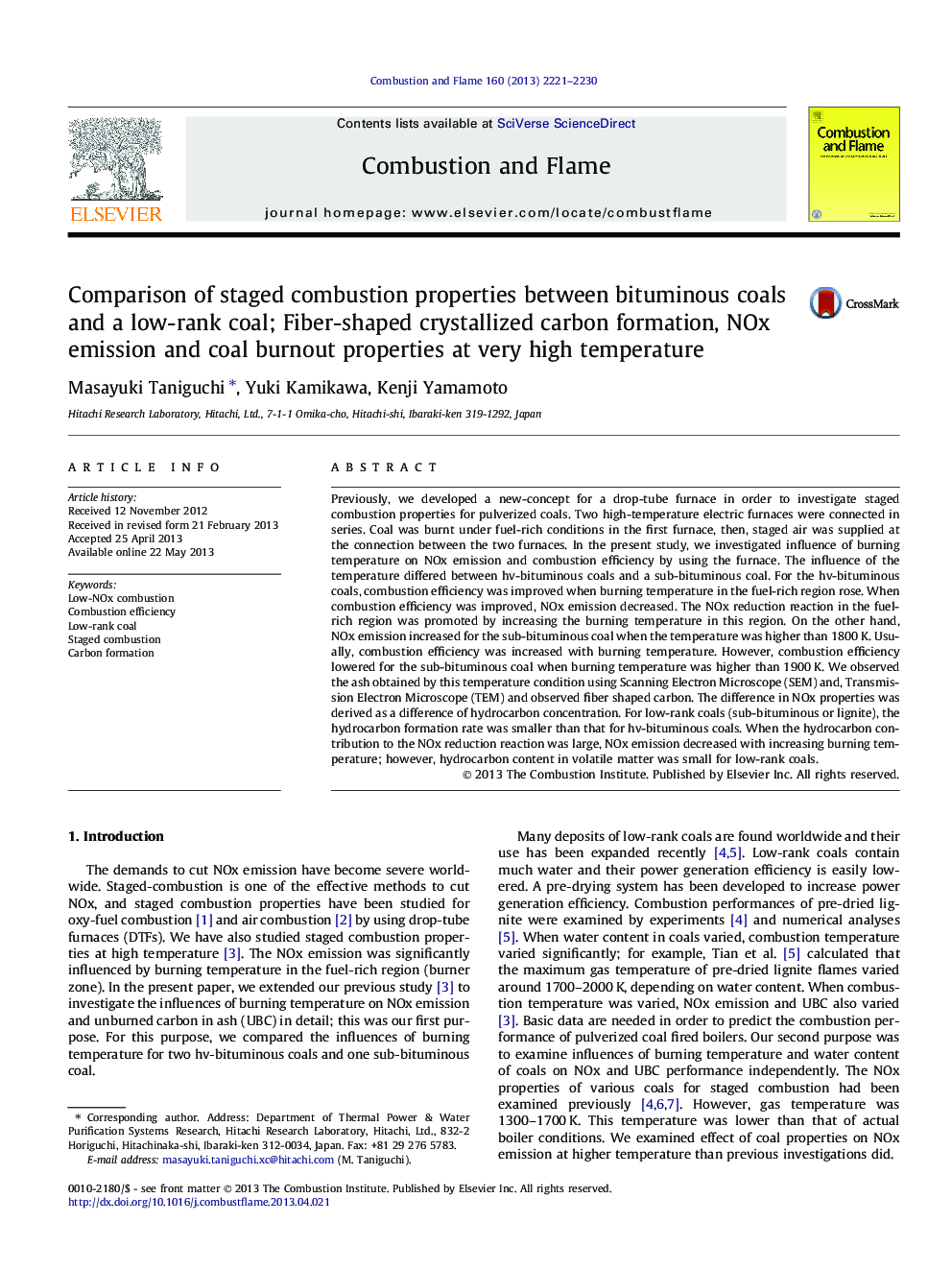| Article ID | Journal | Published Year | Pages | File Type |
|---|---|---|---|---|
| 10264821 | Combustion and Flame | 2013 | 10 Pages |
Abstract
Previously, we developed a new-concept for a drop-tube furnace in order to investigate staged combustion properties for pulverized coals. Two high-temperature electric furnaces were connected in series. Coal was burnt under fuel-rich conditions in the first furnace, then, staged air was supplied at the connection between the two furnaces. In the present study, we investigated influence of burning temperature on NOx emission and combustion efficiency by using the furnace. The influence of the temperature differed between hv-bituminous coals and a sub-bituminous coal. For the hv-bituminous coals, combustion efficiency was improved when burning temperature in the fuel-rich region rose. When combustion efficiency was improved, NOx emission decreased. The NOx reduction reaction in the fuel-rich region was promoted by increasing the burning temperature in this region. On the other hand, NOx emission increased for the sub-bituminous coal when the temperature was higher than 1800Â K. Usually, combustion efficiency was increased with burning temperature. However, combustion efficiency lowered for the sub-bituminous coal when burning temperature was higher than 1900Â K. We observed the ash obtained by this temperature condition using Scanning Electron Microscope (SEM) and, Transmission Electron Microscope (TEM) and observed fiber shaped carbon. The difference in NOx properties was derived as a difference of hydrocarbon concentration. For low-rank coals (sub-bituminous or lignite), the hydrocarbon formation rate was smaller than that for hv-bituminous coals. When the hydrocarbon contribution to the NOx reduction reaction was large, NOx emission decreased with increasing burning temperature; however, hydrocarbon content in volatile matter was small for low-rank coals.
Related Topics
Physical Sciences and Engineering
Chemical Engineering
Chemical Engineering (General)
Authors
Masayuki Taniguchi, Yuki Kamikawa, Kenji Yamamoto,
